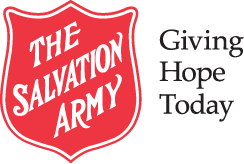During the month of November, John booked into the Salvation Army hostel in order to seek safe and warm shelter. He had been sleeping on park benches and in sleeping bags for months until this point. As per policy, John met the next day with Salvation Army staff for an intake. During this time, it was determined by our staff member that his needs required special attention – therefore he was referred to myself (Housing Information Services) as I offer extra support for higher acuity clients.
John and I immediately built a strong and trusting working relationship. I was sensitive to his desires to find permanent housing as well as his desire to find housing as soon as possible. One option we explored that John was keen on was finding a room for rent that John could stay at while he sought out a more permanent one-bedroom apartment. I was able to locate a room using one of my landlord contacts, and we set up an appointment to go see this room.
On the day we were set to go view the room, we met Brian Rock from Family Services outside our entrance completely by happenchance, and the two struck up a conversation. It was not long until it was discovered that John had previously been referred to Brian’s housing services through Windsor Essex Housing Connections. I was unaware of John’s involvement with WEHC, and Brian stated he had not made contact with John the previous week as he was unaware John was at the Salvation Army. Although policy typically states that services aren’t to overlap, the three of us spoke together and decided I should still help John make his housing appointment. John was not concerned with which agency was helping him so long as he received the help he needed. True also is the fact that Brian and I weren’t concerned with which agency received credit for helping this client so long as this client was helped.
During this housing appointment, I was able to speak with the landlord and negotiate a deal in which the client could move in quickly. We got funds straightened out with the client’s ODSP worker and took care of all necessary formalities. We set plans to meet the landlord the next day to make the payment and have the client move in. I asked the client if Brian could be involved in this process, and he agreed.
The next day, Brian met John and I at the Salvation Army and we set out to meet the landlord to make a payment. However, when we arrived at the unit, the landlord was not there. We called the landlord and he agreed that so long as the funds were secure, the client could move in. However, this particular client had a history of mismanaging his funds and would have a difficult time setting up a meeting to make a payment. Fortunately, Brian’s role allowed him to act as a temporary trustee and hold onto John’s cash in order to make the payment. Using this service, we ensured the landlord would get paid (and in future months the rent would be pay direct), and the client could achieve his goal of being quickly housed.
Brian, John and I then worked on a follow-up plan. We agreed that in the future, Brian’s role would best allow him to follow-up with John on a regular basis for the amount of time that would best suit him. Additionally, Brian’s role best allows John to have an opportunity of renting an apartment long-term at a sustainable price because of the programs access to rent subsidies. We then made a warm transfer of services between the two of us, and I wished John well, telling him that if he needed to contact me he could feel free as my client-first practices aim to not exclude keeping in contact with clients working with other agencies.
This work of collaboration highlights some key advantages of each agency. From The Salvation Army, this client received a safe and warm place to stay, as well as a thorough intake and appropriate referral. From HIS, this client was able to become housed quickly because of HIS’s list of housing contacts, as well as my access to easy transportation. Further, I had the added advantage of being placed at the shelter, allowing me to see this client often, and give him many reminders about upcoming appointments. Lastly, Family Services’ WEHC team gives this client an opportunity to have extensive follow-up care, as well as an opportunity to seek more sustainable housing. Oftentimes while dealing with the most vulnerable of the homeless population, it takes several services working together to find a sustainable and successful solution.





